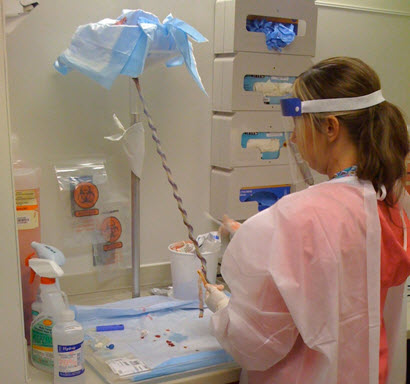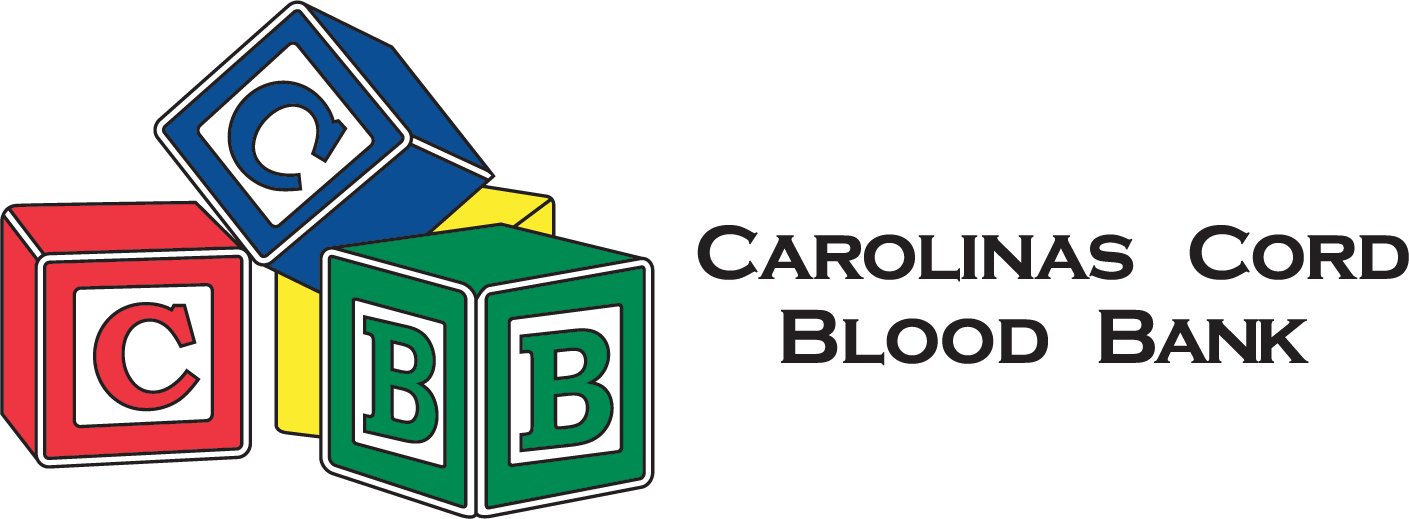Collecting Cord Blood
The Carolinas Cord Blood Bank collects cord blood units on-site from mothers delivering babies at participating hospitals.

At each CCBB collection site, our skilled collection specialists work closely with donors and hospital delivery teams to review & obtain the mother’s consent to donate, retrieve a sample of the mother’s blood, attain a family medical history, and collect the donated cord blood.
Cord blood is collected after the baby is born. Collection can be performed either during the third stage of labor (in-utero collection) or immediately after the delivery of placenta (ex-utero collection).
In-utero Collection
In-utero cord blood collection may take place either during vaginal or Caesarean section delivery. It occurs immediately after delivery of the baby but before the delivery of the placenta. The in-utero collection method maximizes the collection volume while minimizing placental injury and the risk of microbial and maternal cell contamination. This method is used when the collection is performed by an obstetrician or midwife, but it may also be used by CCBB staff.
During the usual delivery routine and after the baby is born, the delivering physician or Certified Nurse Midwife (CNM) places two cord clamps on the umbilical cord, allowing only enough space in between to cut the cord. The cord is cut normally as in any other delivery.
The umbilical cord surface is then thoroughly cleaned and punctured with a sterile needle. The cord blood begins to flow into the collection bag which is positioned lower than the placenta to maximize gravitational flow. Once all of the cord blood is collected, the unit is brought to an adjacent CCBB collection room where it is weighed and prepared for shipping.
Ex-utero Collection
Ex-utero collection of cord blood can be performed after either a vaginal or Caesarean section delivery. Immediately after the baby is born, the umbilical cord is clamped and the placenta is delivered. A CCBB collection specialist then brings the placenta to the onsite CCBB collection room and begins the process of collecting the cord blood.
Once in the collection room, the CCBB collector carefully assesses the placenta, making sure that it is not torn and is free of any obvious infection. The collector then places the placenta in a specially designed collection stand. The umbilical cord surface is thoroughly cleaned and punctured with a sterile needle. The cord blood begins to flow into the collection bag located on a scale which is positioned lower than the placenta to maximize gravitational flow. Once all of the cord blood is collected, the bag is sealed and prepared for shipping, and the required documentation is completed.
What’s Next: Processing Cord Blood Units
